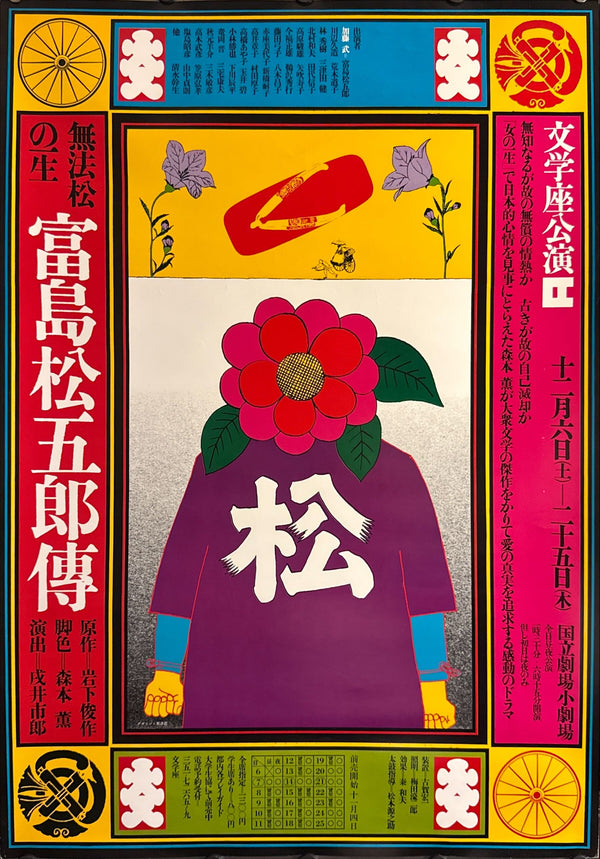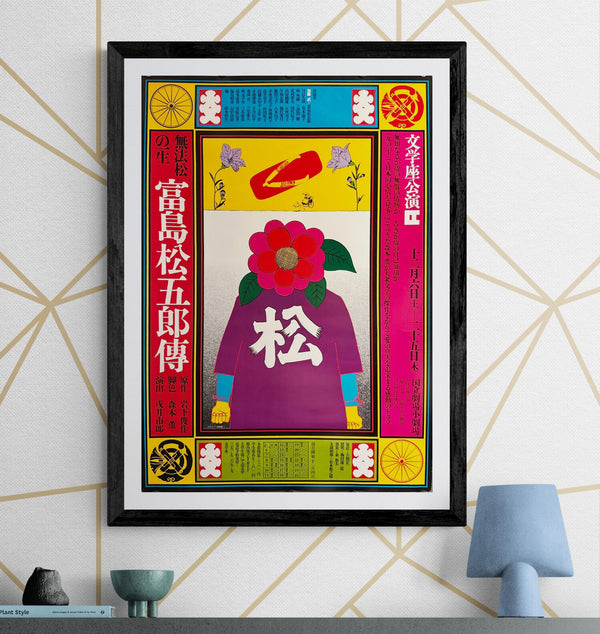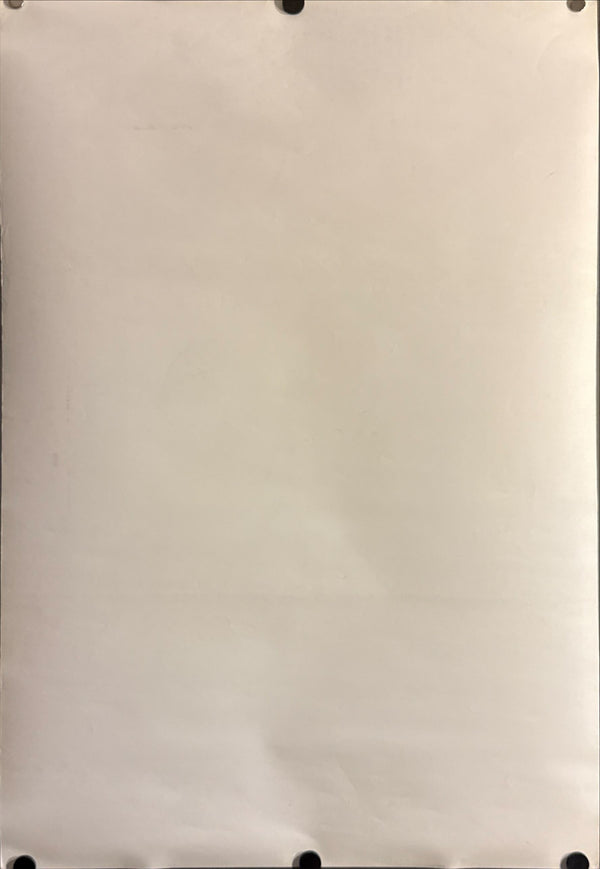
KIYOSHI AWAZU – 無法松の一生 富島松五郎傳 (Muhōmatsu no Isshō / The Life of Lawless Matsu: The Story of Tomishima Matsugorō) – Bungakuza ZA36
KIYOSHI AWAZU – 無法松の一生 富島松五郎傳 (Muhōmatsu no Isshō / The Life of Lawless Matsu: The Story of Tomishima Matsugorō) – Bungakuza
Original Japanese Theatre Poster (Offset Lithograph), 1969 (Shōwa 44) — Ultra Rare, B2 size (c. 51 × 73 cm)
A luminous collaboration between Japan’s avant‑garde theatre and one of its most inventive graphic artists. Designed by Kiyoshi Awazu (粟津潔) for Bungakuza’s production of Muhōmatsu no Isshō, this poster folds folk iconography into pop‑psychedelic color to reintroduce Matsu—the rough‑edged rickshaw man whose fierce loyalty made him a national archetype. This exact design is catalogued by the Hyogo Prefectural Museum of Art (B2, 73.0 × 51.4 cm; 1969), underscoring its museum‑level significance.
Work & credits on the sheet
Original Japanese offset poster created for a Bungakuza (文学座) stage run; the right side text block prints the engagement and venue: “十二月八日(火)—二十五日(木) / 国立劇場小劇場” (Dec 8–25 / National Theatre, Small Theatre). The lower panel includes a printed day‑by‑day calendar for the run. Awazu’s poster sits within a broader body of late‑1960s/70s theatre graphics now actively collected by major museums (see LACMA’s Awazu holdings), reflecting the era’s tight bond between experimental stage work and radical graphic design.
About Kiyoshi Awazu (1929–2009)
A self‑taught polymath and pillar of post‑war Japanese design, Awazu moved fluidly between posters, books, film/theatre graphics and environmental “supergraphics.” His late‑60s/early‑70s work distilled folklore, mass‑culture symbols and activist energy into vivid, rule‑breaking compositions—an approach that helped define the visual language of contemporary Japanese theatre.
Why this poster matters
-
Theatre × Design golden age. Post‑war troupes such as Bungakuza regularly commissioned leading designers; Awazu’s stage posters are among the most sought‑after examples of that long‑standing collaboration.
-
Museum‑recorded variant. This exact design and format are documented by the Hyogo Prefectural Museum of Art with 1969 dating and B2 specifications.
-
Cross‑collectible. Sits at the intersection of contemporary art, Japanese design history, and theatre ephemera.
Artwork highlights
-
Central emblem & flower. A monumental kanji “松” (Matsu) across a violet robe anchors the composition; above it, a stylised camellia bloom (tsubaki) signals resilience and devoted love—themes of the play.
-
Folk objects, modern color. A bright red geta sandal floats in a yellow panel flanked by wildflowers and a tiny insect vignette—Awazu’s playful nod to street life made iconic.
-
Heraldic border. Crest‑like wheels and emblems in the corners echo rickshaw motifs; stacked vertical title bars (left: 無法松の一生 / 富島松五郎傳, right: 文学座公演) frame the sheet like a portable theatre façade.
-
Performance calendar. A printed schedule grid along the bottom records the original run, a period detail many surviving examples lack.
Printing & format
-
Technique: Multi‑color offset lithograph
-
Size: B2 (approx. 51 × 73 cm / 20 × 28.7 in)
-
Imprint/credits on sheet: 文学座公演 / 国立劇場小劇場 / 十二月八日—二十五日 (with calendar)
Condition
Excellent, unrestored and not linen‑backed—rich, saturated color; clean margins; only light handling at edges and fold intersections typical of theatre display. Presents beautifully. (Please review the photos; they show the exact poster offered.)
-
It is over 50 years old.
-
Not a reproduction or reprint.
-
Certificate of Authenticity included.
Awazu’s blend of folk emblems, festival colors and pop flatness turns a beloved literary hero into a modern icon—an elegant record of the fertile dialogue between Japanese theatre and graphic design at the end of the 1960s.




